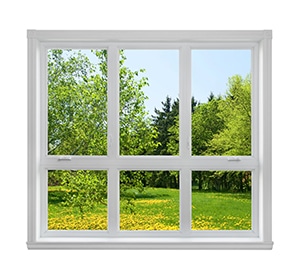 GoodMood Photo/shutterstock
GoodMood Photo/shutterstock
An innovative new smart window capable of altering its light permeability at the touch of a button has been demonstrated by researchers in Germany, who say the window can also be simultaneously used for light harvesting.
Next-generation smart window and façade devices will become increasingly common in the future and researchers at the Friedrich Schiller University Jena in Germany have helped address the growing problem of carbon dioxide emissions from the building industry in their research project Large-Area Fluidic Windows or LaWin.
The building sector is amongst the biggest carbon dioxide emitters – whether it be from residential homes, manufacturing facilities and storage depots to huge commercial buildings, approximately 40% of the energy consumption with in the EU is down to heating, cooling, air conditioning and lighting such buildings.
LaWin saw researchers develop a prototype window in which a new glass material was placed. The glass material was filled with channels loaded with nanoscale magnetic iron particles, which can be extracted from the liquid using a magnet.
“Our project‘s key feature is the use of liquids in windows and façades, for example, as heat carriers or to enable additional functions,“ explains Lothar Wondraczek, the project‘s coordinator and chair of Glass Chemistry at the University. “To this end we develop new glass materials, into which large-area channel structures are integrated. These are used for circulating functional fluids.”
“Depending on the number of the iron particles in the liquid, the liquid itself takes on different shades of grey, or it will even turn completely black,” Wondraczek continues. “Then, it becomes possible to automatically adjust the incidence of light, or to harvest solar heat which can then be put to further use within the building.”
The efficiency in terms of heat gain per area is comparable to that of state-of-the-art solar thermal facilities. However, unlike those, the new system can be integrated into vertical façades. Switching between on or off – the release or capture of particles – happens in a separate tank, and an electrical connection at the window is not necessary.
Writing in Advances Sustainable Systems, the researchers state: “The system is based on a fluidic window, manufactured at low cost from a laminate of structured, rolled glass and a thin cover with high surface strength. Loading the circulating fluid with magnetic nanoparticles enables active shading and solar-thermal energy harvesting, whereby the loading state and, hence, the optical properties of the liquid can be controlled through remote switching in a particle collector-suspender device.”
In its fully shaded state, the window has a typical harvesting efficiency of 45% of the incoming solar power. Compared to alternative suspended particle device ideas, this prototype allows for high flexibility and compatibility with already established production lines. Furthermore, there is no need for electrical contact, transparent conductive layers or electrolytes.
“The greatest advantage of large-scale fluidic windows is that they can substitute air conditioning systems, daylight regulation systems and for instance warm water processing,” stresses Wondraczek.
Developing cost-effective large-size window glass modules is key to their potential industrial use. On the one hand the glass elements need to include the channels, on the other hand they need to maintain their performance over the whole lifespan of the building. Finally, they must provide the ability for integration with standard window manufacture technologies in frames of double or triple glazings. The researchers’ current prototypes - which were manufactured on a scale of around 200 square meters - demonstrate that those requirements can be fulfilled.
Disclaimer: The views expressed here are those of the author expressed in their private capacity and do not necessarily represent the views of AZoM.com Limited T/A AZoNetwork the owner and operator of this website. This disclaimer forms part of the Terms and conditions of use of this website.